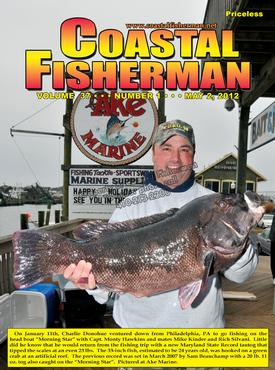


Article by Larry Jock
 NEW IGFA RELEASE RULES APPROVED
NEW IGFA RELEASE RULES APPROVED
Reprinted with permission from the IGFA
Many fishing tournaments, especially for billfish, use IGFA’s angling rules as their foundation. Central to this is the belief that IGFA rules stipulate that a fish is considered caught once the leader is wound to the rod tip or grasped by the mate or other person. However, no such language exists in IGFA’s angling rules because these rules were designed for world records, where the fish is not considered caught until it was weighed.
Over the years, IGFA has been approached by numerous individuals to codify a set of release rules. It is IGFA’s hope that establishing a definition for an official release will not only institute a standard by which anglers can compare releases, but also, and more importantly, encourage anglers to continue releasing fish. At its recent annual board meeting in January, the IGFA Board of Trustees approved he following:
IGFA will consider a fish officially released when one of the following actions is completed:
A. The mate is able to grab the leader
B. The swivel hits the rod tip
C. The connection (knot, splice, etc.) between the leader and the mainline/double line/ fly line passes through the rod tip
Leader lengths must conform to current IGFA tackle requirements. Specifically, for line up to and including 20 lb. test, the leader may not exceed 15 feet. In lines over 20 lb. test, the leader may not be in excess of 30 feet. All leader measurements are inclusive of the lure or hook arrangement and are measured to the bend of the last hook. IGFA tackle requirements for fly fishing do not stipulate a maximum overall length for fly leaders. However, since IGFA rules do not allow class tippets heavier than 20 lbs., IGFA will adopt the convention of allowing a maximum fly leader length of 15 feet in keeping in accordance with the regulations for conventional tackle. Fly leader length is inclusive of the fly and will be measured to the bend of the last hook. Shock tippets may not measure more than 12-inches in length and class tippets must be minimum of 15-inches in length.
In addition to the suggested rule above, IGFA also recommends the following best practices for safe and ethical release of fish.
• Circle hooks are encouraged when fishing with live or dead natural bait.
• The hook should be removed if possible and will not cause additional harm to angler or fish.
• If the hook cannot be removed, the leader should be cut as close to hook as possible.
• Mates should refrain from manually breaking or “popping” leaders because this can cause additional harm to fish, especially those not hooked in the jaw.
• Ample time should be taken to revive exhausted fish by gently moving them forward in the water to get water flowing over the gills.
• Knotless, rubber coated nets should be used on fish that are netted.
For more information about IGFA International Angling Rules, contact IGFA World Records Coordinator Jack Vitek at 954-924-4246 or email [email protected].
BILLFISH FOUNDATION RECOGNIZES MARYLAND ANGLERS
Every time they fish on three oceans, anglers and captains -- like two anglers from Maryland -- are helping scientific research. They were among 46 winners from around the world to receive The Billfish Foundation’s 2011 Tag & Release Awards.
Since 1990 they’ve become the heart-and-soul of TBF’s eminent conservation program committed to tag and release of billfish from the Atlantic, Pacific and Indian Oceans, while supplying valuable data critical to learning the pelagic species migratory habits.
Victoria Roberts of Stevensville, MD, a multi-time winner, took honors as the top tagging angler in the Atlantic Ocean for white marlin, while Paul Legnard of Arnold, MD won as the top release angler for sailfish, also in the Atlantic category. It was his first time win with TBF.
The TBF Annual Tag and Release Awards, presented during the Miami International Boat Show each February, is the world’s premier big game fishing competition, with thousands of TBF member anglers and captains from 70 countries invited to compete. The 2011 competition ran from Nov. 1, 2010 to Oct. 31, 2011 with “tagging data reports” and “release notification cards” generated from the ocean’s temperate waters where a majority of the world’s billfish inhabit. To qualify, active TBF members must have tagged and/or released five or more of a species. TBF’s Youth Program, recognizing the conservation ethics and achievements of young anglers, has a minimum of three billfish in three age groups.
“Today, instead of catch-and-kill, more anglers are tagging more fish than ever before,” said TBF Science and Policy Director Peter Chaibongsai. “We had a total of 5,399 release records and 4,410 tag records for the competition, an increase over last year.
“In the 22 years of TBF’s program over 168,000 billfish have been tagged and of those more than 2,800 have been recaptured and most re-released. TBF’s release category which began nine years ago, has logged in over 66,000 billfish releases.”
Recently celebrating its 25th anniversary, TBF works worldwide to advance the conservation of billfish and associated species and to improve the health of oceans and dependent economies. Chaibongsai can be reached at 800-438-8247 ext. 107, at [email protected] or at Peter_Chaibongsai@billfish. org.